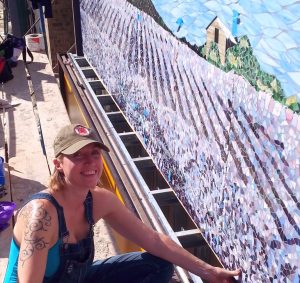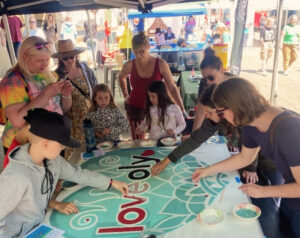Embrace your materials.
When the mosaic bug bites, you often start with a particular material because you took a class or had access to a source for tile, glass, porcelain, etc. You may stick with that first material, or you might experiment with several before finding the one that becomes your favorite. In my case, I initially used porcelain and clay tile because I was able to source it for free from tile setters and distributors. It was easy to find white, beige, grey and occasionally blue tile, which I put in burlap bags and busted with a hammer. At one point, I was invited by a paint-your-own-pottery shop to use bright colored scraps and broken pieces to create something for their display window. I found this material far more satisfying, and I even resorted to painting neutral tile with enamels in my desperation for rich colors.


But in about 2001 I was given a box of broken stained glass. I didn’t yet know how to cut and shape glass, so I used them just as I found them. The glass was rough and the surface dull, but I took pleasure in playing with the colorful material.
Soon, I had the opportunity to take some informal glass cutting lessons from local fused and leaded glass artists, and I took to it. I continued to play with tile and stone at times, but glass quickly became my primary material. Over more than 20 years of practice, cutting glass feels second nature. I love the reflectivity and color range and I have much more control and ease with it than with other materials. Thus, part of my defining artistic style is my use of glass, but also the way that I use it.
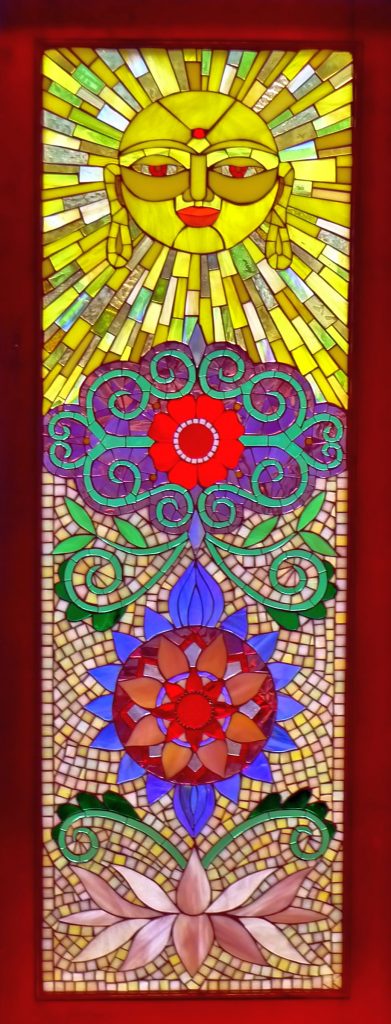
Consider some of the mosaic artists you most admire. You will probably notice that their work can be recognized in large part because of the material. Dougald Mcinnis and Scott Fitzwater both work mainly in slate, but each has particular technique and patterning that is identifiable. Susan Crocenzi makes tesserae from polymer clay and combines them with crash glass and stained glass in a manner that is unmistakable. Solange Piffer uses patterned ceramics in an Opus Sectile style that is uniquely hers. Look at mosaic artists you see online and think about how they are restricting their materials to certain items. For my part, I am finally learning to say no to tile and stone, and I’m trying to cull my giant collection so that I can focus on stained glass. It is tempting to play with all of those other toys, but it also results in bodies of work that don’t fit together aesthetically. As a friend pointed out years ago while viewing my solo show, “This looks like a group show.” I have a hard enough time sticking with three or less design styles, and adding other materials into the mix is a distraction.
That doesn’t mean you can’t play with all of the toys, but if you do, make that your thing. Kelley Knickerbocker mixes all sorts of materials in unconventional ways, but she is consistent in her particular way of putting them together, and usually keeps it within a limited palette. Jeannie Houston-Antes is the queen of mixed media mosaic, incorporating all sorts of charms and found objects, and it’s her particular choice of items that results in a kitchy, delightful style.



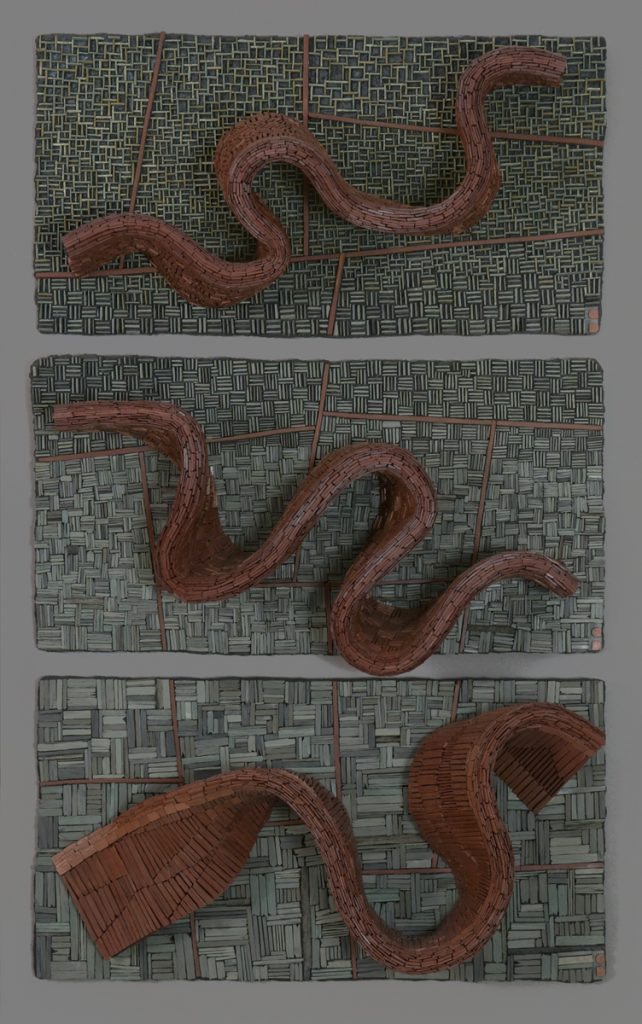

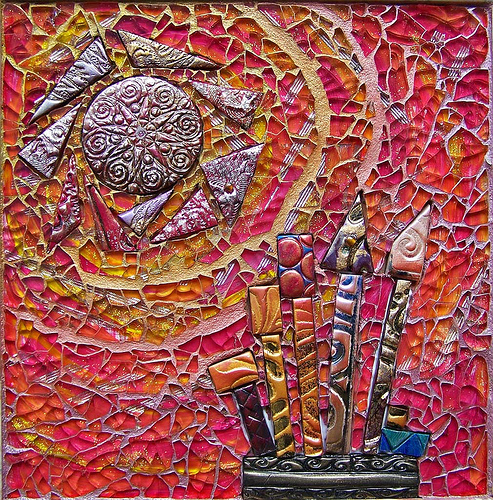
If you are still learning, by all means, explore all of the materials. But as you become proficient, exercise restraint. Eliminate the materials that are not working as well for you. Lean into those that are easier for you to obtain and manipulate. This will also help with having a more organized creative space. (I am not an example of this! I have a 20’ x 20’ studio that is complete chaos with every kind of mosaic material and then some! But I am working on it.)
And most of all, remember to do what you like to do. As I mentioned in earlier posts on the topic, pay attention to what you like, find intersections with your personal interests, and use a sketchbook or journal to write it out. If you find that you love making hearts or butterflies, do that. If you like to make monochromatic mosaic with all one hue, do that. Keep doing it until you find new ways of doing it. Add a twist. Have fun and let it take you out of your anxiety or frustration, or use it to express those feelings. Just dive in.




